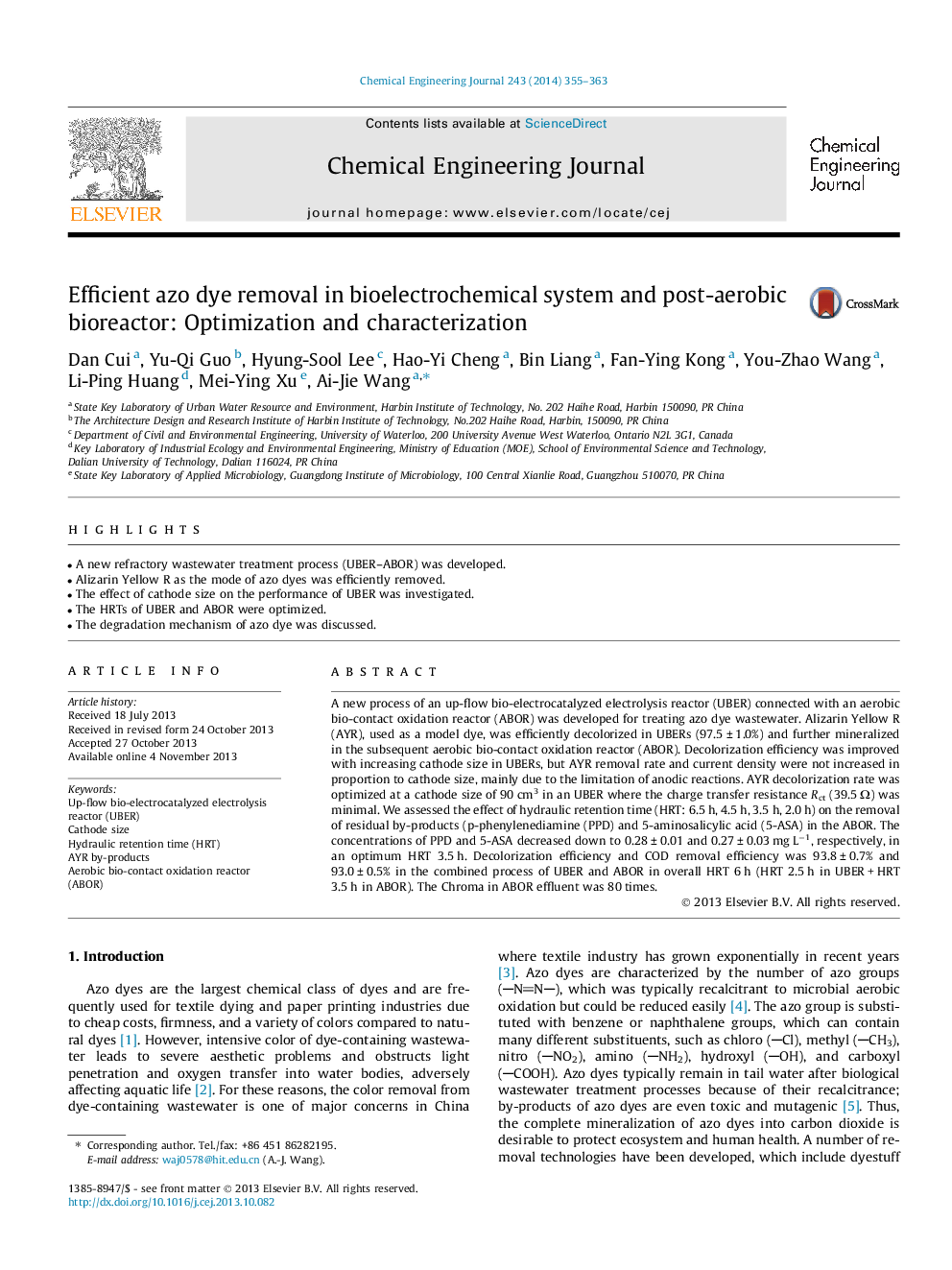| Article ID | Journal | Published Year | Pages | File Type |
|---|---|---|---|---|
| 147879 | Chemical Engineering Journal | 2014 | 9 Pages |
•A new refractory wastewater treatment process (UBER–ABOR) was developed.•Alizarin Yellow R as the mode of azo dyes was efficiently removed.•The effect of cathode size on the performance of UBER was investigated.•The HRTs of UBER and ABOR were optimized.•The degradation mechanism of azo dye was discussed.
A new process of an up-flow bio-electrocatalyzed electrolysis reactor (UBER) connected with an aerobic bio-contact oxidation reactor (ABOR) was developed for treating azo dye wastewater. Alizarin Yellow R (AYR), used as a model dye, was efficiently decolorized in UBERs (97.5 ± 1.0%) and further mineralized in the subsequent aerobic bio-contact oxidation reactor (ABOR). Decolorization efficiency was improved with increasing cathode size in UBERs, but AYR removal rate and current density were not increased in proportion to cathode size, mainly due to the limitation of anodic reactions. AYR decolorization rate was optimized at a cathode size of 90 cm3 in an UBER where the charge transfer resistance Rct (39.5 Ω) was minimal. We assessed the effect of hydraulic retention time (HRT: 6.5 h, 4.5 h, 3.5 h, 2.0 h) on the removal of residual by-products (p-phenylenediamine (PPD) and 5-aminosalicylic acid (5-ASA) in the ABOR. The concentrations of PPD and 5-ASA decreased down to 0.28 ± 0.01 and 0.27 ± 0.03 mg L−1, respectively, in an optimum HRT 3.5 h. Decolorization efficiency and COD removal efficiency was 93.8 ± 0.7% and 93.0 ± 0.5% in the combined process of UBER and ABOR in overall HRT 6 h (HRT 2.5 h in UBER + HRT 3.5 h in ABOR). The Chroma in ABOR effluent was 80 times.
